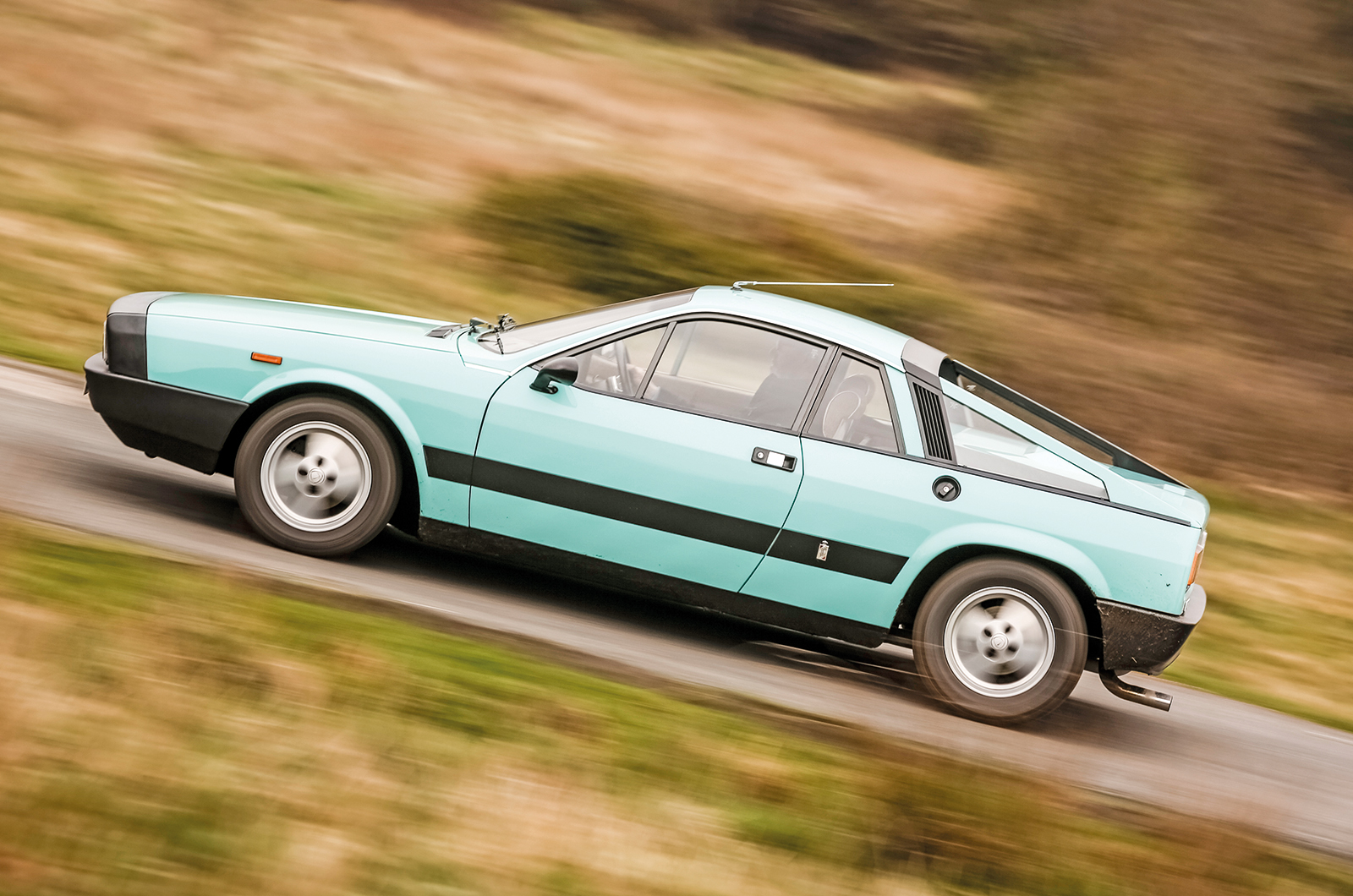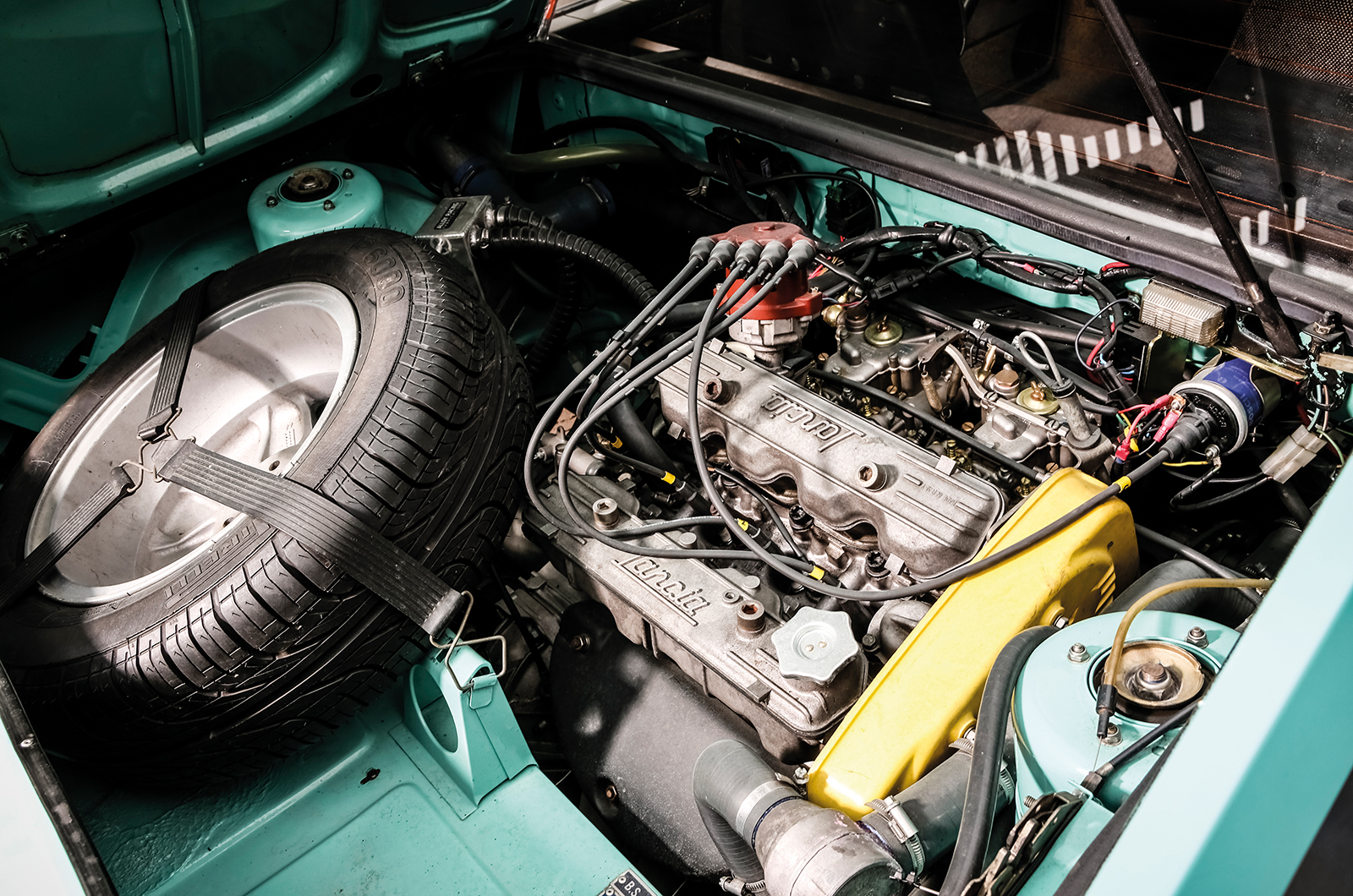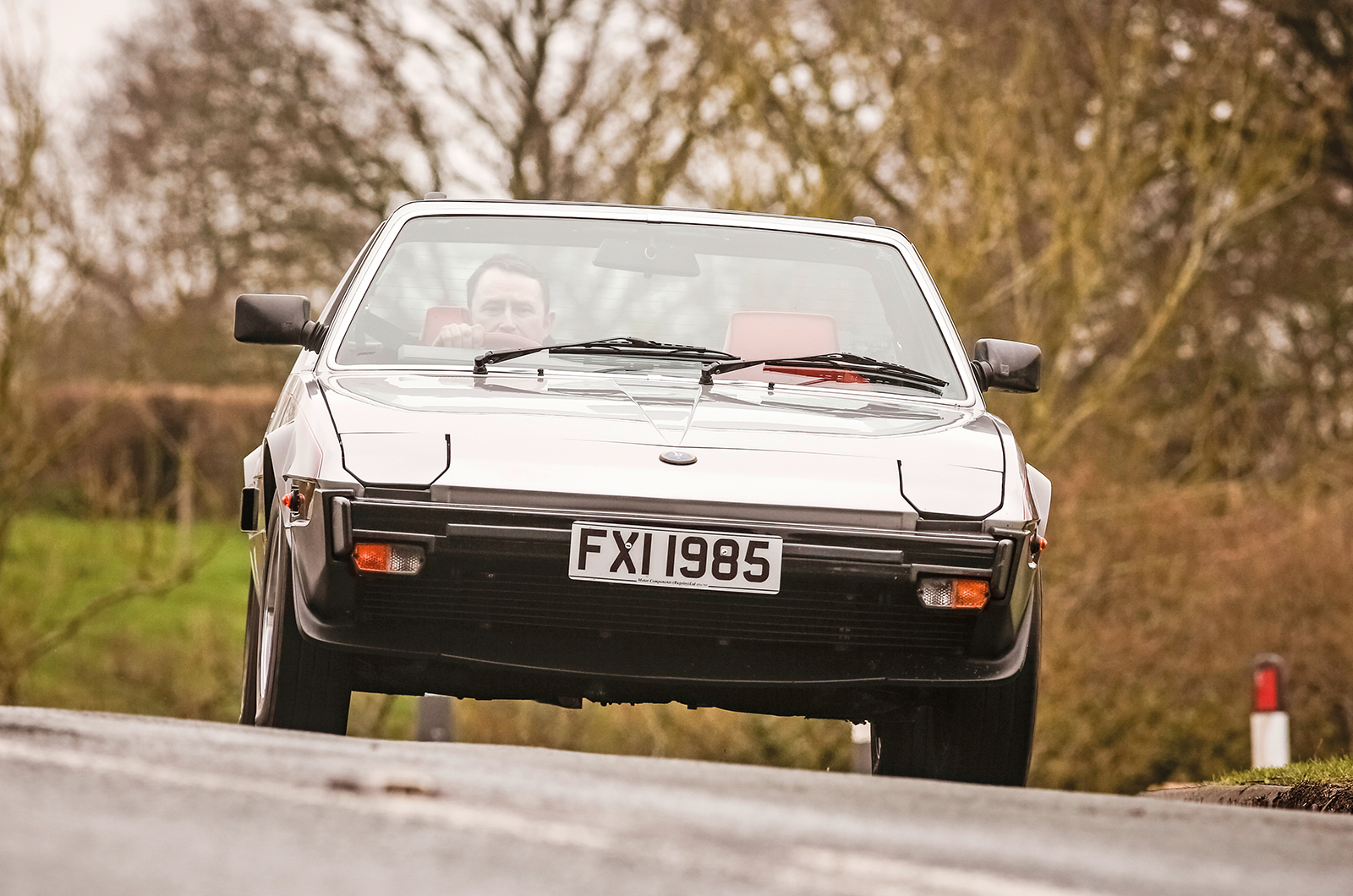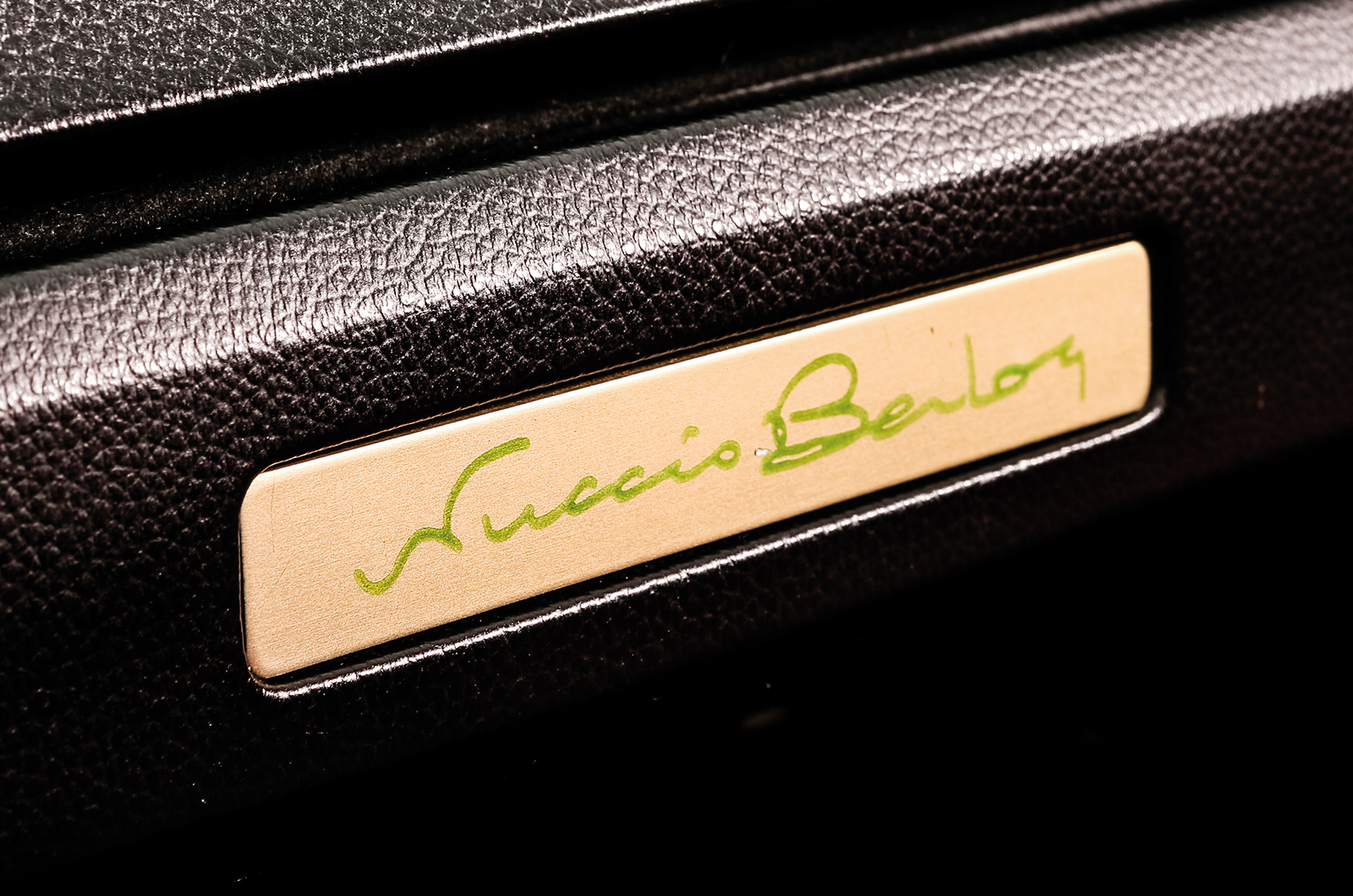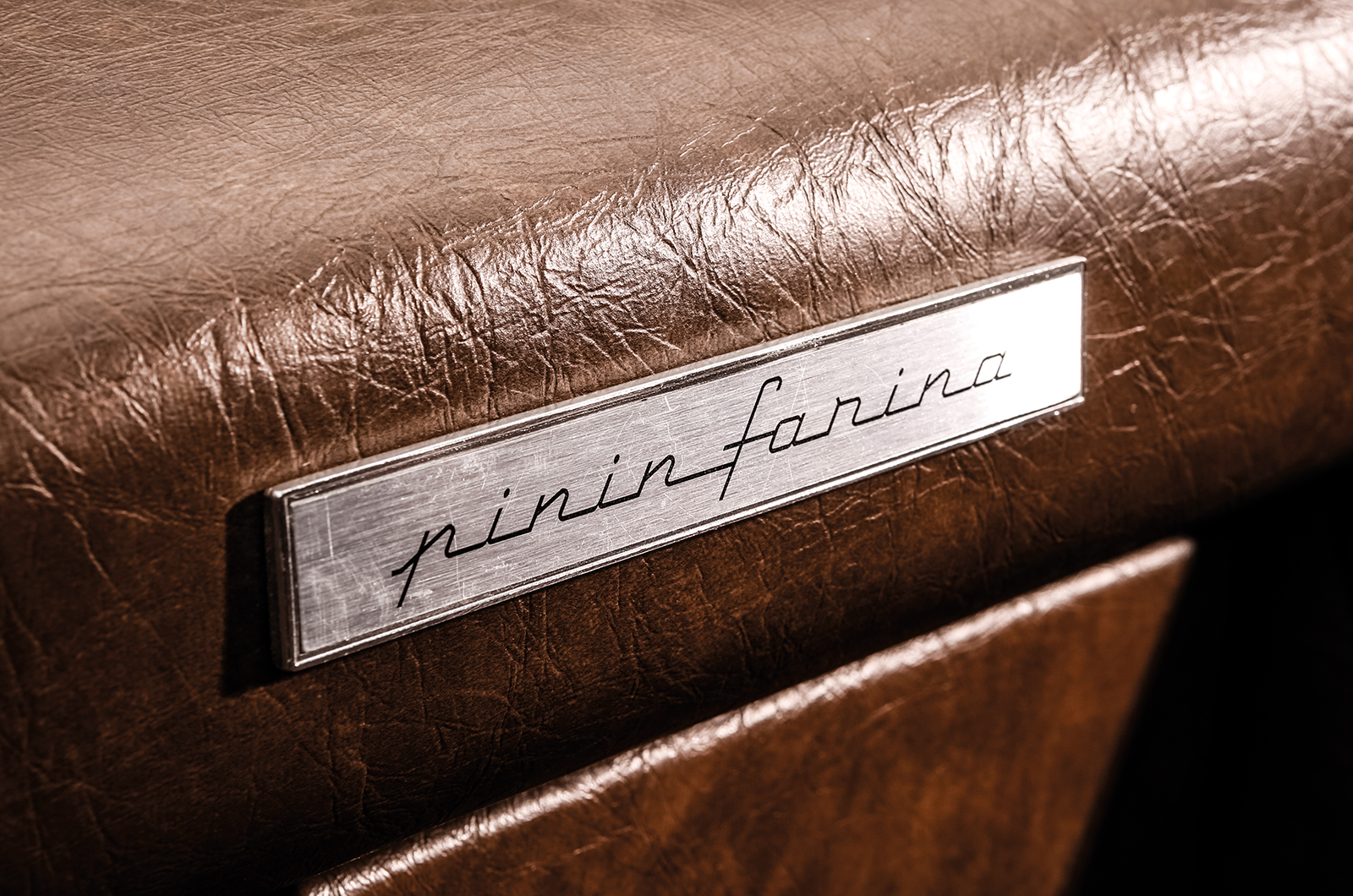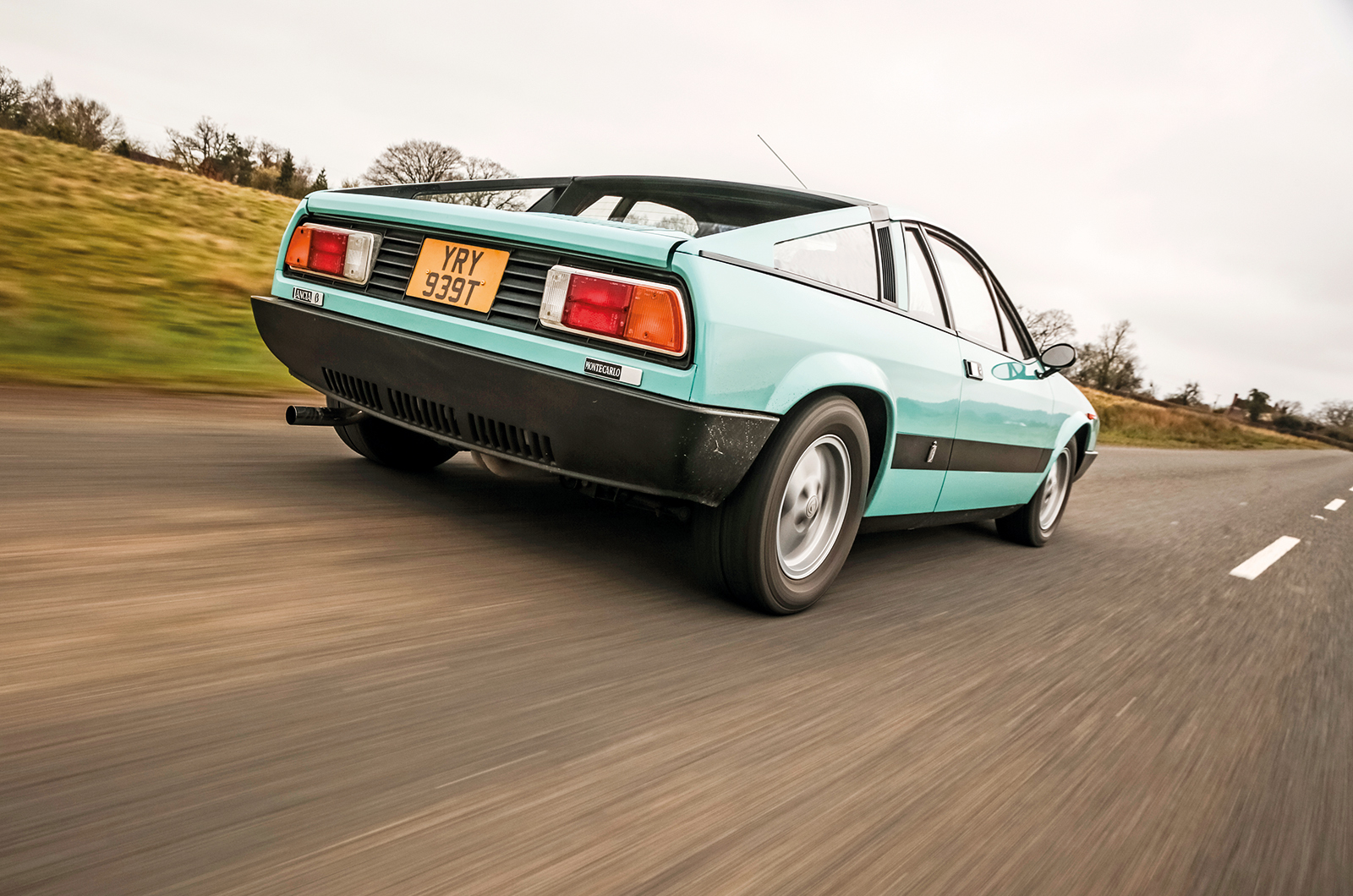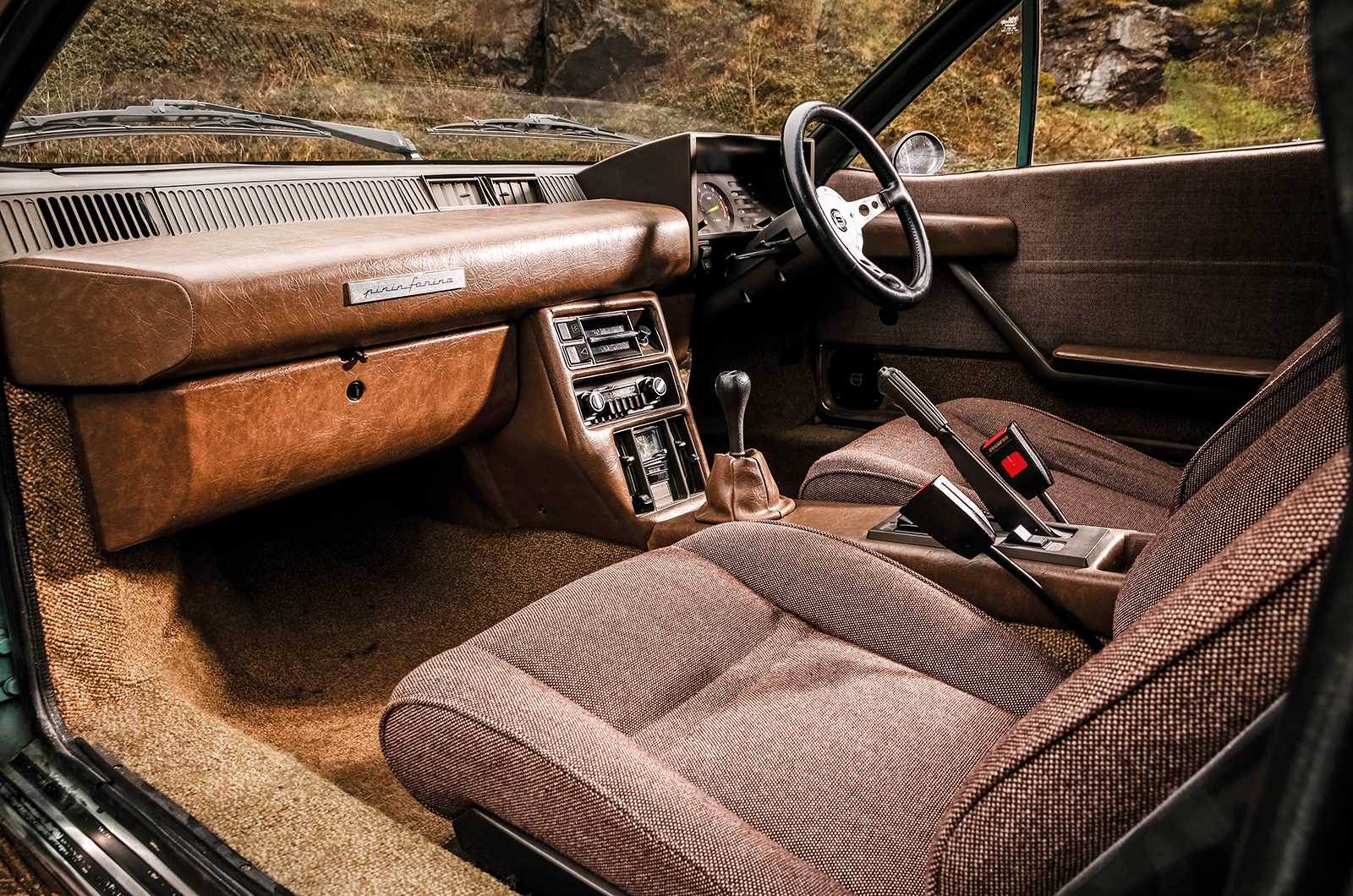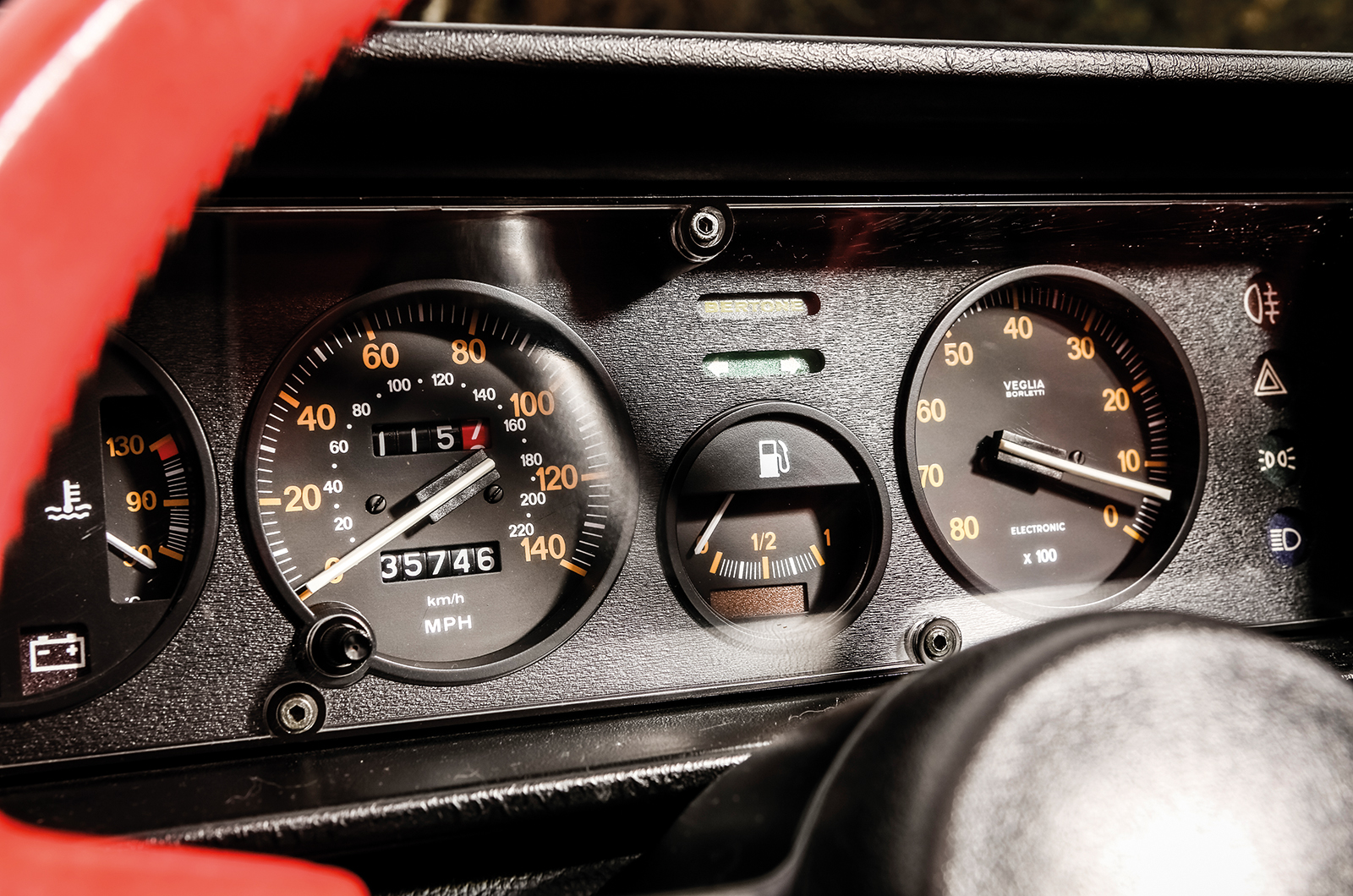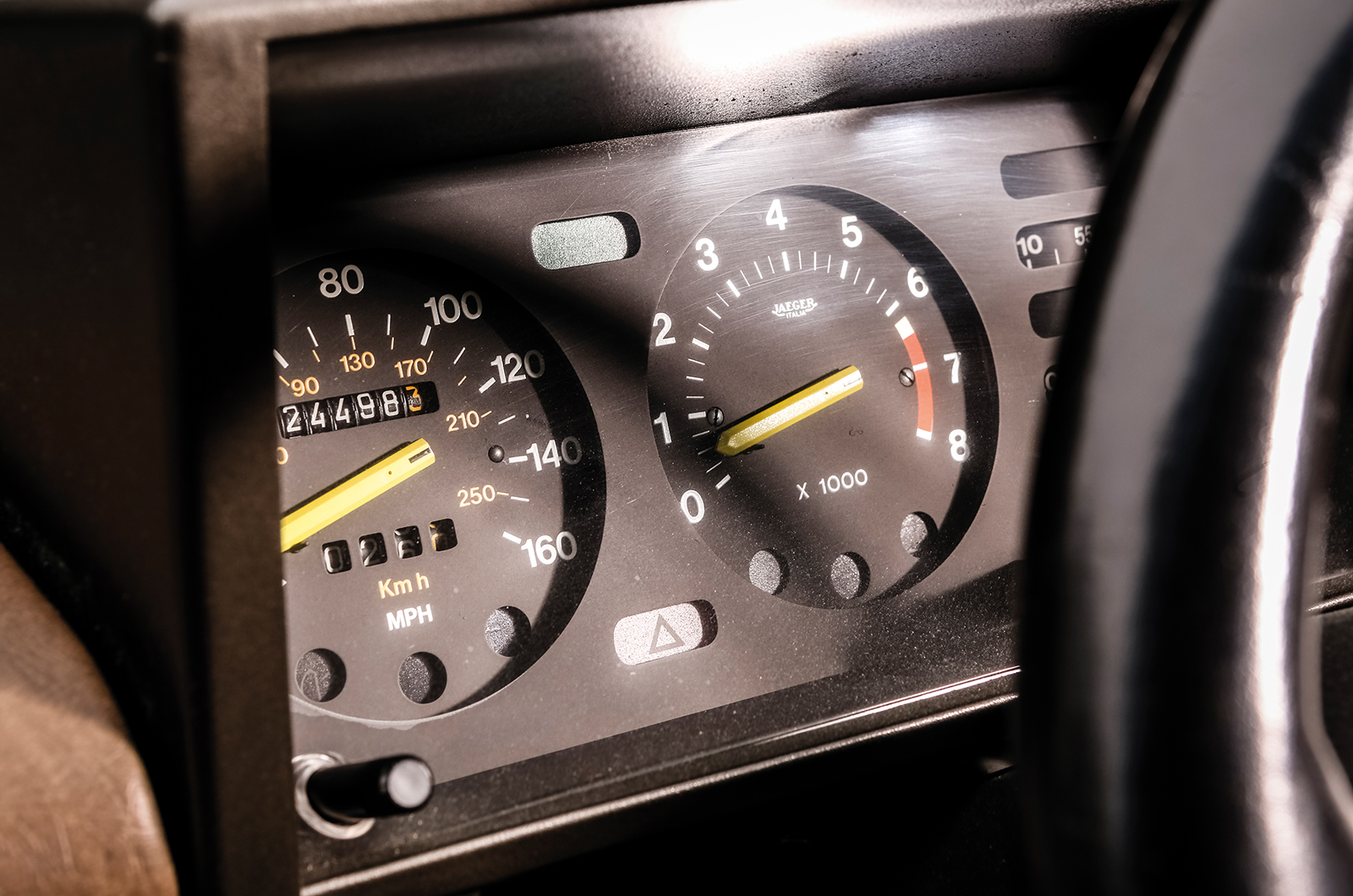The Lancia’s gearchange is marginally quicker, narrower of gate and stiffer in action; ratios are changed with a sharp jab of the fist.
The lack of brake servo does mean that the approach to corners and general anticipation has to be honed to almost psychic levels, because the brake pedal is long of travel and short on action.
The Fiat's anticlockwise tacho runs to 8000rpm
The ride is firm, but the Lancia flows through corners with minimal fuss and is forthcoming about where its dynamic limitations lie. Aside from the brakes, the Monte-Carlo isn’t just a friendly thing, it’s a rarity – an early, mid-engined machine that won’t try to spit you into the scenery with an evil glint in its headlamps.
As its smaller dimensions would suggest, the Fiat feels lighter and more nimble – something that is underlined by its steering, which matches the Lancia’s for feel and deliciousness of weight, yet it is quicker-geared.
The single twin-choke sohc motor revs freely around the clock with a merry hum, but you do get the sense that the X1/9 is not so ultimately communicative or as forgiving as the Lancia when its low moment of polar inertia decides to bare its teeth.
However, the Fiat counters with a better ride and brakes, which allow you to buzz through unexplored bends without pessimism about stopping distances curdling the experience.
The Lancia's dials sit within a very square housing
There isn’t a clear winner here. A few niggles – of the mechanical, geographical and meteorological varieties – mean that ultimate limits remain untouched and out of view.
Yes, the Monte-Carlo has more presence and menace compared with the slight X1/9 – and until they perfect a shrinking potion, it is only the lack of interior room that prevents me from picking the effervescent Fiat.
Ultimately, though, comparing these two Italians with their different yet complementary characters is almost like comparing golf with gravy because they start with the same letter.
The Lancia, as a faster, more polished and roomy GT, is the more able ground-coverer; while the more intense, concentrated Fiat makes more of the ground it covers.
Photography: Tony Baker
FIAT/BERTONE X1/9 1500
- Sold/number built 1972-1989/170,000
- Construction steel monocoque
- Engine iron-block, alloy-head, sohc 1498cc ‘four’, downdraught twin-choke Weber carburettor
- Max power 85bhp @ 6000rpm
- Max torque 87lb ft @ 3200rpm
- Transmission five-speed manual, RWD
- Suspension independent by MacPherson struts and lower arms
- Steering rack and pinion
- Brakes discs all around
- Length 13ft 1in (3980mm)
- Width 5ft 2in (1567mm)
- Height 3ft 9in (1143mm)
- Wheelbase 7ft 3in (2202mm)
- Weight 2015lb (914kg)
- 0-60mph 10.8 secs
- Top speed 110mph
- Mpg 34
- Price new £4575
- Price now c£10,000
LANCIA BETA MONTE-CARLO
- Sold/number built 1975-’78 & ’80-’82/7578
- Construction steel monocoque
- Engine iron-block, alloy-head dohc 1995cc ‘four’, downdraught twin-choke Weber carburettor
- Max power 118bhp @ 6000rpm
- Max torque 122lb ft @ 3500rpm
- Transmission five-speed manual, RWD
- Suspension independent by MacPherson struts, lower wishbones; front anti-roll bar
- Steering rack and pinion
- Brakes discs, with servo
- Length 12ft 6in (3810mm)
- Width 5ft 7in (1690mm)
- Height 3ft 11in (1190mm)
- Wheelbase 7ft 7in (2300mm)
- Weight 2293lb (1040kg)
- 0-60mph 8.9 secs
- Top speed 119mph
- Mpg 30
- Price new £5927
- Price now c£20,000
Simon Charlesworth
Simon Charlesworth is a contributor to Classic & Sports Car

